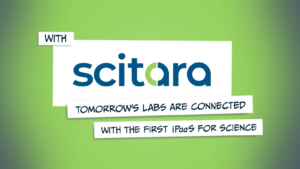DATA HASN’T JUST BEEN TRAPPED.
IT’S BEEN KIDNAPPED.
Data silos are nothing new.
But as cloud-computing continues to take hold across today’s labs—with many organizations using multiple cloud solutions to increase agility—the problem, in some ways, has gotten worse.
New data islands have formed across disparate infrastructures and sites, complicating governance and compliance—and making it challenging to truly mobilize data enterprise-wide.
The result?
Security may be difficult to maintain.
Work may be duplicated.
Time and money may be wasted.
Scientific discoveries may be delayed.
The need to connect these islands has never been more pressing. But equally as important is the need to integrate data independently of those connections—in a separate, decoupled layer that ensures true data mobility.
Because without that mobility, scientists, who use data to accelerate discovery, and business leaders who use it to support business goals, will still be forced to wrestle with limited access, disruptions, and delays.
AI and Machine Learning to the rescue?
Emerging technologies are making it possible to aggregate the growing amount of scientific data that needs to be managed. But, so far, the solutions that deliver this aggregation have come with a catch.
Many platforms that tackle the challenges created by data lakes require unique protocols, ontologies, and vendor-controlled data structures—along with proprietary instruments and system integration capabilities.
This does three unfortunate things:
- It forces scientists to hand control of their data over to external vendors.
- It creates vendor lock-in, making it more difficult to switch vendors in the future.
- It replaces existing monolithic systems that trap and isolate data with an even bigger monolithic system that ultimately traps and isolates even more data.
Gaining mobility shouldn’t mean losing control
Universal connectivity is a vital part of completing your lab’s digital transformation and advancing scientific discovery.
But tackling both data aggregation and data connectivity with a single proprietary solution comes at a significant cost—control. In the end, the resulting repository creates the same problems as the data silos it was designed to eliminate.
If the key to your lab’s future is connectivity—then the key to your lab’s future is true data mobility.
Because with true data mobility, information can be shared in real-time from peer-to-peer, repository-to-repository and lab-to-lab.
Because with true data mobility, data is actually freed—and can be accessed or shared independently of any one application or repository.
Only a data exchange platform that doesn’t lock you into a proprietary repository will do the trick. And we just happen to have the industry’s only one.
Talk to one of our data mobility experts about our Scientific Integration Platform.
